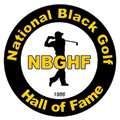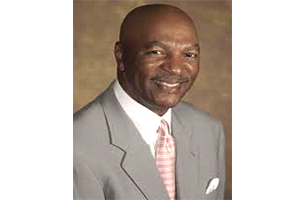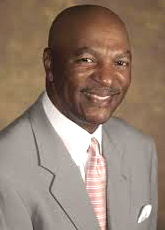 Pete McDaniel
Pete McDaniel
Contributing Editor
African American Golfer’s Digest
Blog: April 2013
A Tale of Two Weekends
While Tiger Woods basked in the glory of his 77th career victory on the PGA Tour and return to No. 1 in the world before thousands in the gallery and millions more watching on TV, the undecorated celebrated a triumph of their own in relative obscurity less than 70 miles away.
The day before at Tampa’s historic Rogers Park Golf Course, mini-tourist Marcus Manley survived considerably less blustery conditions than those that ravaged Bay Hill to post a final-round 68 and edge Vincent Johnson by a stroke in the Advocates Pro Tour Mid-Winter Classic. The D.C. area native shot 138 for 36 holes to claim first-place money of $7,500.
His victory capped a weekend highlighted by the induction ceremony of the National Black Golf Hall of Fame (NBGHOF). The 2013 class of inductees included Tiger’s father Earl Woods Sr., Langston Golf Course and the Wake Robin Golf Club, the nation’s oldest women’s club. Golf Channel’s Scott Walker emceed the affair attended by several industry reps, including CEO of the World Golf Foundation Steve Mona.
Most folks over in Orlando probably weren’t even aware of such doings in Tampa, which compelled a group of black pioneers to assemble in honor of the occasion. Pioneers like Jim Dent, Calvin Peete, Charlie Owens, Renee Powell, James Black, Tom Woodard, Adrian Stills, Bobby Stroble and Jerry Bruner, a 14-year veteran of the European PGA Senior Tour and first-place finisher in the gray beard division. That’s because not one major media outlet covered the event. Not even the Tampa Tribune, the hometown newspaper.
 “Something happened this past Sunday that may never happen again,’’ said Bruner, who also finished T-5 in the overall competition. “There were eight players there—and I’m not counting myself because I’m not in yet—representing the Black Golf Hall of Fame. It was great.’’
“Something happened this past Sunday that may never happen again,’’ said Bruner, who also finished T-5 in the overall competition. “There were eight players there—and I’m not counting myself because I’m not in yet—representing the Black Golf Hall of Fame. It was great.’’
Admittedly, the lack of exposure might have been partly due to an ineffective PR effort by the NBGHOF and the Advocates Tour. However, it’s also symptomatic of the continued marginalization of those languishing on golf’s back roads in general and the Black golf tour in particular.
It’s my drum and I will continue to beat it: The golf industry continues to still the concerns and accomplishments of minorities with a sad deafness reminiscent of the first half of the 20th century. Even worse, it attempts to placate us with table scraps, never inviting us in the big house for a full meal. We are, in effect, invisible men and women.
I say that not tongue in cheek (I know the world No. 1 and the “first golfer’’ are both of African American descent), but with a sense of numbing reality. This is, after all, 2013—more than 100 years since John Shippen became this country’s first professional golfer by the strictest definition of the word.
 All of the aforementioned Black pros were products of the mini-tours. The founder of the NBGHOF, Harold Dunovant, cut his teeth on the Black golf tour (affectionately referred to as the chittlin’ circuit).
All of the aforementioned Black pros were products of the mini-tours. The founder of the NBGHOF, Harold Dunovant, cut his teeth on the Black golf tour (affectionately referred to as the chittlin’ circuit).
(Photo: Jeff Dunovant)
The Mid-Winter Classic is a throwback to the era of four-to-a-room, two-dollar breakfast at a roadside café and bait-and-switch tournament organizers. And just like the good old days, it featured some of the best young talent mainly because of limited opportunities to swim their way out of the deep pool of prospects into the shallow end. Besides Johnson, a past recipient of the “Charlie Sifford’’ exemption into the Northern Trust (for years known as the Los Angeles) Open, the field included former Ohio State star Kevin Hall, the deaf player who has diligently chased his dream of playing on the big tour, and Harold Varner, the up-and-comer out of Gastonia, N.C., and East Carolina University.
Varner opened with a 67 that wowed veteran Jesse Allen.
“I’m not easily impressed and I don’t ever give endorsements,’’ said Allen, “but this kid’s got mine. He’s the real deal.’’
Varner, 22, slipped to a windblown 74 in the second round to finish fourth.
“I wish I had some time to spend with him,’’ said Bruner, of Varner with whom he was paired in the final round. “He plays a right-to-left ball flight. Sometimes it turns too much; sometimes not enough. I’ve found that the shot Jack Nicklaus played (left-to-right) produces consistency and wins golf tournaments. I believe that’s all I’d have to say to him.’’
The 65-year-old Bruner’s expertise is derived from years of grinding on the West Coast and three wins in Europe. His is just one of a litany of stories from the back roads waiting on transit to main street.
As someone in the watchtower for more years than I care to count, I was heartened by the young men of color continuing to chase their dream and equally honored to accept Earl’s induction on behalf of Kultida and Tiger. He was a man among men in my opinion; a good friend and confidant. He preached big dreams and a concept he called “caring and sharing.’’
I was proud to be so honored by the same hall of fame several years ago. I know Earl would be, too. He refused to be rendered invisible as a college baseball player at Kansas State in the segregated Big Eight Conference. He refused to be rendered invisible as a Green Beret fighting in the jungles of Vietnam for his country. He refused to be rendered invisible when he and Tiger faced “the look’’ at junior golf tournaments.
Earl advised his famous son to let his clubs speak for him. No doubt he would tell all who are able to do the same. For all others made to feel invisible, he would say speak out with boldness. I, for one, always listened to him.
_______________
Pete McDaniel is a veteran golf writer and best-selling author. His blogs and books are available at petemcdaniel.com
Comments on this topic may be emailed directly to Pete at: gdmcd@aol.com



